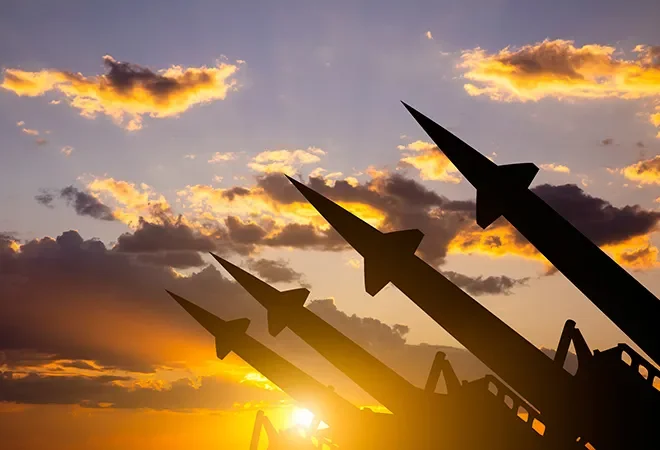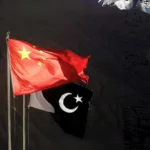On October 14, during a Democratic Congressional Campaign Committee Reception, President Biden in what appeared to be an extemporaneous remark, referred to Pakistan as one of the most dangerous nations in the world, possessing “nuclear weapons without any cohesion”.
On the same day, the Indian Ministry of Defense announced the successful test of a submarine-launched ballistic missile (SLBM) from its indigenous INS Arihant nuclear ballistic missile submarine (SSBN), securing its position in an elite club of nations with the ultimate in strategic nuclear deterrence, and signifying a crucial step toward the completion of its nuclear triad.
With these recent developments in the backdrop of an already volatile region; and skepticism voiced against the nuclear status of particular nations, it is bemusing to have arrived at the door of a new Nuclear Age in South Asia carrying the baggage of a troubled past.
“Destroyer of Worlds”
The dawn of the Nuclear Age was marked by the US-led Manhattan Project, undertaken during World War II. In addition to the simultaneous development of two types of atomic bombs eventually used on Japan, the project may also be remembered for gathering intelligence on the German nuclear capabilities through Operation Alsos, aiming to search for personnel, records, material, and sites to evaluate their activities and prevent their capture by the Soviet Union. In hindsight, the epoch has come to symbolize not only the mutually antagonistic attitudes characteristic of the Cold War but also the death and destruction famously prophesied by Robert Oppenheimer’s recollection of witnessing the first detonation of a nuclear weapon; echoing words from the Hindu scripture,
“Now I am become Death, the destroyer of worlds”.
Nuclear Footprints in South Asia
The ominous nuclear shadow manifested itself over South Asia with the origins of Indian nuclear ambitions, gathering momentum after the 1962 Sino-Indian War. However, India’s quest to deter potential Chinese assault in time presented a security dilemma for its smaller neighboring arch-rival, Pakistan. Upending the international norm against nuclear proliferation and the Comprehensive Test Ban Treaty (CTBT) which had opened for signature two years prior, India and Pakistan in May 1998 announced two sets of nuclear tests each, ushering in what was widely interpreted as a new arms race between countries which had by then been at war with each other thrice in 50 years of independence.
The Nuclear Doctrine of India has since its declaration in 1999 pledged its adherence to credible minimum nuclear deterrence, as well as a No First Use (NFU) Policy. Conversely, Pakistan has not made its doctrine formally known, possibly to add to the value of deterrence but has been unambiguous about its India-centric character and its refusal to adopt a NFU Policy. Theoretically, the doctrine, which has since evolved from minimum deterrence to Full Spectrum credible minimum deterrence, is divided into four thresholds, including spatial, military, economic, and political; crossing which the weapons would become operationally activated in event of conventional or nuclear war with India.
Nuclear Safety and CBMs
Among the norms most prevalent in the nuclear realm are deterrence, the demilitarization of nuclear forces, and nonproliferation. However, despite numerous meetings and Confidence-Building Measures (CBMs) between the two countries, notably the annual exchange of lists of nuclear facilities, many of the actions taken by the states have been vague and contradictory.
Nevertheless, global nuclear watchdogs such as the NTI Nuclear Security Index, which evaluates nuclear security progress among nations; and the International Atomic Energy Agency (IAEA) which seeks to encourage the peaceful use of nuclear technology while inhibiting its use for military objectives, have through their rankings and recommendations ensured satisfactory compliance from both India and Pakistan on security and control measures.
In spite of such commitments, the race between India and Pakistan to acquire superior weapons has been characterized by a spiral of actions and reactions.
The year 2021 alone was marked by a ferocious arms race between the two South Asian nuclear neighbors, who carried out 26 missile tests cumulatively.
While India launched 16 ballistic and cruise missiles, Pakistan retaliated by testing 10 missiles with almost comparable capabilities. Notably, India’s testing of the new generation nuclear-capable ballistic missile Agni-P was responded to by Pakistan’s testing of the Shaheen III and Shaheen 1A surface-to-surface ballistic missiles. With this foreground, it is imperative to comprehend that in the midst of a security dilemma, security is seen as a zero-sum game, which causes increased instability as the adversary reacts to the consequent decreases in its security. Arms competitions and military buildups are merely features of this dilemma, while its manifestation lies in the development of nuclear weapons and missiles.
The Two Dyads
The existence of two security rivalry dyads has complicated the security dynamics of South Asia; comprising India and Pakistan on the one hand and China and India on the other.
With China reportedly investing in, and expanding the number of its land, sea, and air-based nuclear delivery platforms and building the infrastructure necessary to support this expansion, India is bound to retaliate by expanding its own capabilities. This in turn would provoke Pakistan to react by transforming its posture and capabilities. Furthermore, India’s two-front dilemma posed by the Pakistan-China partnership may trigger the bolstering of its conventional forces and modernizing its nuclear capabilities. If India’s BrahMos missile misfiring into Pakistan earlier this year was any omen, South Asia has not prepared itself for the cascading effect yet to take hold in this dangerous new age.
Your go-to editorial hub for policy perspectives and informed analysis on pressing regional and global issues.


![Sherman from United States met with Pakistan's Foreign Minister Qureshi in Islamabad [Image by Pakistan Ministry of Foreign Affairs via AP].](https://southasiatimes.org/wp-content/uploads/2021/10/AP21281255820748-150x150.webp)


Add a Comment